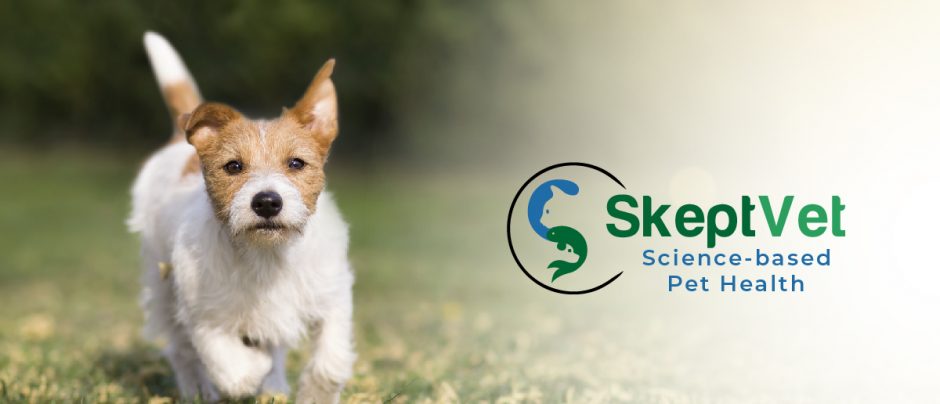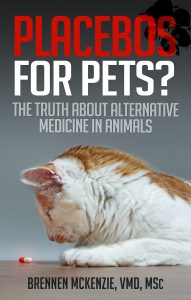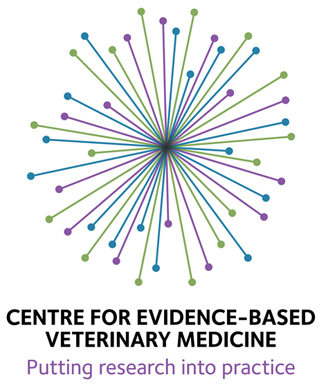Primal Pet Foods, a popular marketer of commercial raw diets for dogs and cats, recently announced a recall of one of its raw cat foods because testing has suggested the diet may be contaminated with the bacteria Salmonella. Such recalls in the pet food industry are typically precautionary, and most of the time no actual harm results for pets or their owners. Nevertheless, since advocates of homemade and raw diets tend to promote such recalls as evidence of the unhealthy nature of conventional commercial pet diets, and to try and equate every recall with the tragic, but unusual, melamine contamination problem of 2007, I feel it is important to point out that raw diet and other pet products touted as “natural” and healthy are also subject to such recalls.
Whether or not this particular diet turns out to be source of disease for pets or their owners is less important than the general health risks posed by raw pet diets. I have discussed these diets at length before (e.g. here and here), and the bottom line is this:
1) The theoretical arguments used to promote them are not sound.
2) There is no evidence for the supposed health benefits claimed for raw diets or for most of the health hazards raw diet advocates claim are associated with conventional pet foods.
3) The risks of raw diets are probably small but certainly greater than those for conventional foods, without any apparent benefits to justify them.
These conclusions are much the same as those in a research review being presented next week at the annual meeting of the American College of Veterinary Internal Medicine. Dr. Anread Fascetti, a board-certified veterinary internist and nutritionist, reviews the literature concerning raw diets (1), and finds a number of serious concerns.
A. Nutritional Inadequacy:
A number of studies of both commercial and homemade raw diets have found significant nutritional deficiencies or excesses (2, 3). In one study, cats fed a diet based on raw rabbits developed heart muscle disease associated with a deficiency of the amino acid taurine (4).
B. Lack of Health Benefits:
The little research that has been done on raw diets does not support dramatic claims of health benefits. Some research has found subjective differences in coat and stool quality but not in any other factors evaluated (4). One study suggested that periodontal disease was reduced by adding oxtail to the diet, but other studies have found high rates of periodontal disease in wild dogs and feral cats consuming whole prey (5, 6), and no difference in oral health between domestic cats eating commercial diets or mostly whole prey (7).
C. Health Risks:
As I have pointed out before, raw diets are more likely than cooked diets to be contaminated with infectious organisms, including Salmonella. Such organisms have been found in raw diets (1, 8-12) and have been found shed in the feces of pets eating these diets (13), they can be passed from pets to humans (13-16), and they have caused illness in both pets and humans (16-18).
Another recent paper in the Journal of the American Veterinary Medical Association, written by Dr. Kate KuKanich (19), specifically addresses the subject of Salmonella contamination in pet foods and treats. Her analysis of the literature shows that uncooked foods and treats are far more likely to be contaminated with Salmonella, and that up to 69% of sled dogs and 61% of racing greyhounds fed raw meat shed this organism in their feces even when they have no diarrhea or other clinical symptoms. This is compared to a rate of shedding of less than 5% up to 15% in studies of other healthy dogs. While Salmonella contamination after cooking has been found in dry diets, the risks for uncooked foods and treats are substantially higher, and Dr. KuKanich concludes, as I would,
Ample evidence exists for the risk of Salmonella contamination in raw food diets; thus, it is advised that pet owners avoid feeding raw food diets to pets.
References
1. Fascetti AJ. Raw food diets: A research review. Proceedings, American College of Veterinary Internal Medicine Forum, Denver, CO, June 15-18, 2011.
2. Freeman L., Michel, K., Nutritional analysis of 5 types of “Raw Food Diets.” JAVMA March, 2001;218(5): 705.
3. Dillitzer, N, Becker, N, Kienzle, E. Frequency and extent of nutritional imbalances in “bone and Raw food” (barf) rations. Proceedings Waltham Interational Nutritional Sciences Symposium, Cambridge, UK, September 16-18, 2010. p. 44.
4. Glasgow AG, et. al. Role of Diet in the Health of the Feline Intestinal Tract And in Inflammatory Bowel Disease. Center for Companion Animal Health, School of Veterinary Medicine, University of California at Davis. Accessed June 5, 2011 at http://www.vetmed.ucdavis.edu/ccah/local-assets/pdfs/Role_of_diet_feline%20health_Glasgow.pdf
5. Steenkamp G, Gorrel C. Oral and dental conditions in adult African wild dog skulls: a preliminary report. Journal of Veterinary Dentistry. 1999 Jun;16(2):65-8.
6. Verstraete FJ, van Aarde RJ, Nieuwoudt BA, Mauer E, Kass PH. The dental pathology of feral cats on Marion Island, part II: periodontitis, external odontoclastic resorption lesions and mandibular thickening. Journal of Comparative Pathology. 1996 Oct;115(3):283-97.
7. Clarke DE, Cameron A. Relationship between diet, dental calculus and periodontal disease in domestic and feral cats in Australia. Australian Veterinary Journal. 1998 Oct;76(10):690-3.
8. Chengappa MM, Staats J, Oberst RD, Gabbert NH, McVey S. Prevalence of Salmonella in raw meat used in diets of racing greyhounds. Journal of Veterinary Diagnostic Investigations. 1993 Jul;5(3):372-7.
9. Joffe DJ, Schlesinger DP. Preliminary assessment of the risk of Salmonella infection in dogs fed raw chicken diets. Canadian Veterinary Journal. 2002 Jun;43(6):441-2.
10. Weese JS, Rousseau J, Arroyo L. Bacteriological evaluation of commercial canine and feline raw diets. Canadian Veterinary Journal. 2005 Jun;46(6):513-6.
11. Morley PS, Strohmeyer RA, Tankson JD, Hyatt DR, Dargatz DA, Fedorka-Cray PJ. Evaluation of the association between feeding raw meat and Salmonella enterica infections at a Greyhound breeding facility. Journal of the American Veterinary Medical Association. 2006 May 15;228(10):1524-32.
12. Leonard EK, Pearl DL, Finley RL, Janecko N, Peregrine AS, Reid-Smith RJ, Weese JS. Evaluation of pet-related management factors and the risk of Salmonella spp. carriage in pet dogs from volunteer households in Ontario (2005-2006). Zoonoses Public Health. 2011 Mar;58(2):140-9. doi: 10.1111/j.1863-2378.2009.01320.x.
13. Finley, R. et al. The risk of Salmonella shedding by dogs fed Salmonella-contaminated commercial raw food diets. Canadian Veterinary Journal. 2007;8:69-75.
14. Gutman LT, Ottesen EA, Quan TJ, Noce PS, Katz SL. An inter-familial outbreak of Yersinia enterocolitica enteritis. New England Journal of Medicine. 1973 Jun 28;288(26):1372-7.
15. Morse EV, Duncan MA, Estep DA, Riggs WA, Blackburn BO. Canine salmonellosis: A review and report of dog to child transmission of Salmonella enteritidis. American Journal of Public Health. 1976 Jan;66(1):82-4.
16. CDC. Outbreaks of multidrug-resistant Salmonella Typhimurium associated with veterinary facilities—Idaho, Minnesota, and Washington, 1999. MMWR Morbidity and Mortality Weekly Report 2001;50:701–704.
17. Canadian Communicable Disease Report. Human health risk from exposure to natural dog treats. 200(26).41. Acessed June 5, 2011 at http://www.collectionscanada.gc.ca/webarchives/20071217102424/http://www.phac-aspc.gc.ca/publicat/ccdr-rmtc/00vol26/dr2606ea.html
18. Finley R, Reid-Smith R, Weese JS. Human health implications of Salmonella-contaminated natural pet treats and raw pet food. Clin Infect Dis. 2006 Mar 1;42(5):686-91. Epub 2006 Jan 20.
19. KuKanich KS. Update on Salmonella spp contamination of pet food, treats, and nutritional products and safe feeding recommendations. Journal of the American Veterinary Medical Association 2011 Jun;238(11):1430-1434.









